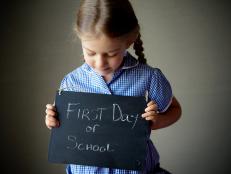Build a Diverse Library with These Inclusive Children's Books
10 great titles to add to your kid's collection.


Caiaimage/Paul Bradbury
It wasn’t all that long ago when every doll in the toy store and the majority of characters in children’s TV programs and books were all one conspicuous color: white. And while we still have a lot of work to do showcase diversity in these areas, a nonprofit called Reading Partners has been working to boost equity in education through tutoring programs across America by incorporating diverse books into their tutoring curriculum. Here are 10 titles Reading Partners recommends for building a diverse home library.
Written by Anne Sibley O’Brien, who works to promote cultural understanding through children’s literature with her organization I'm Your Neighbor, this book shares the thoughts and fears of three young immigrants from Guatemala, Korea and Somalia when joining an American classroom. "I’m New Here" shines a light on the challenges they face, and how encouragement and understanding from teachers and students can make all the difference.
Recommended ages: 5–8 years
Caldecott Medalists Leo and Diane Dillon begin their colorful book with: "If kids ran the world, we would make it a kinder, better place." You don’t need to spend much time with a child to realize the authors are probably right! Many pages feature illustrations showing kids of all backgrounds working together to garden, feed the hungry and help the sick, and as anyone who has read "Goodnight Gorilla" a million times can tell you, sometimes it’s the wordless pages that spark the best conversations.
Recommended ages: 5–8 years
Inspired by the author Amada Irma Perez’s childhood, this bilingual book shares a young Mexican American girl’s quest to find a space she can call her own. Through the story, readers gain insight on the dynamics of many immigrant families and multigenerational households while modeling problem-solving and dreaming big. Since there’s a fair amount of text that’s presented in both English and Spanish, this book is great for everyone but especially for bilingual parents or children.
Recommended ages: 6–10 years
Seeing some fancily dressed women on the subway sets young Julián’s imagination in motion — and when he returns home, he transforms his abuela’s fern into a fancy hat and her curtains into a mermaid’s tail. Instead of getting angry at the mess, his abuela takes him to a celebration where everyone is as fantastically dressed as he is. Author-illustrator Jessica Love’s whimsical drawings of an underwater world take readers on the journey with Julián while teaching children about individuality and self-expression along the way.
Recommended ages: 4–8 years
Based on supermodel Georgie Badiel’s childhood in Burkina Faso, this story centers on Gie Gie, whose major frustration is the scarcity of drinking water near her African village. Each morning, Gie Gie must rise early and walk miles to fetch water for her community while wishing there was some way to bring the water closer. This book’s charming main character and rich illustrations not only provide a lovely peek into another culture, but also an important perspective for those who take our abundance of fresh water for granted.
Recommended ages: 6–8 years
What could be more emblematic of the American dream than overcoming many challenges early in life to become the first Latin-American Supreme Court Justice? This bilingual book chronicles the childhood of Sotomayor. She is relatable to many; Sotomayor was raised by a single mother in the South Bronx, and her mom worked many jobs to send her two kids to private school. Their struggles taught Sotomayor determination and perseverance — lessons that are passed along to readers as they learn more about this inspiring woman.
Recommended ages: 4–8 years
The main character, Mira, uses art, color and expression to liven up her drab neighborhood. And while diversity isn’t the central theme, it’s there in beautifully subtle ways that children are sure to pick up on — such as the diversity among Mira’s neighbors and the idea that many colors are better than one. Two other positive messages promoted in this book include working together to create change, and how the actions of one person can make a difference.
Recommended ages: 4–7 years
Older kids are ready to think about diversity in more complex ways, using the historical and societal contexts they’ve learned at school and home. This award-winning book follows the story of young Mason Steele, who grows up hearing about Civil Rights issues from his father, who one day brings home a typewriter for Mason. The gift ends up helping Mason navigate school desegregation after moving to an all-white high school and gives him an opportunity to challenge racial barriers. Readers will be inspired by Mason’s hard work and determination that pays off in the end.
Recommended ages: 7–12 years
Sometimes, having an overt message of diversity isn’t the point. Sometimes, it’s all about representation — and that’s the case with Nia, the main character in this cute book about a girl and her turtle. The point isn’t that Nia is African American; the point is, why shouldn’t she be? The story is told from both Nia’s perspective and the turtle’s, and is ultimately about friendship, a theme everyone can relate to.
Recommended ages: 4–8 years
This book is a Cinderella story, but one pulled from Algonquin Indian folklore about a village on the shores of Lake Ontario. All the young women wanted to marry an invisible being because he is said to be rich, powerful and handsome — but first they have to prove to his sister that they have seen him. The rough-faced girl scarred by fire might be the one to succeed where her beautiful, but cruel, sisters have failed.
Recommended ages: 6–10 years

























